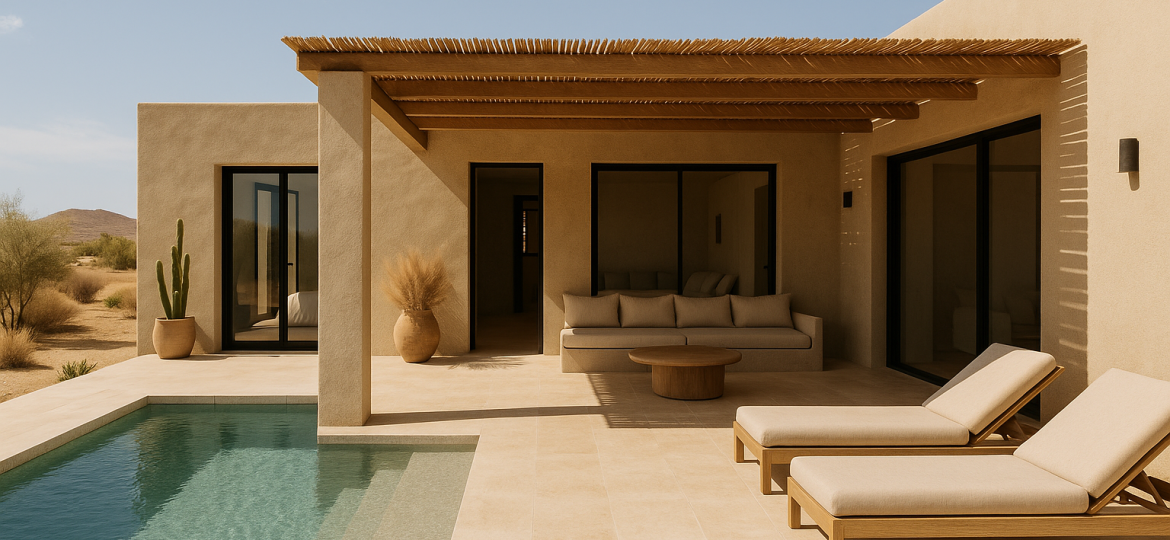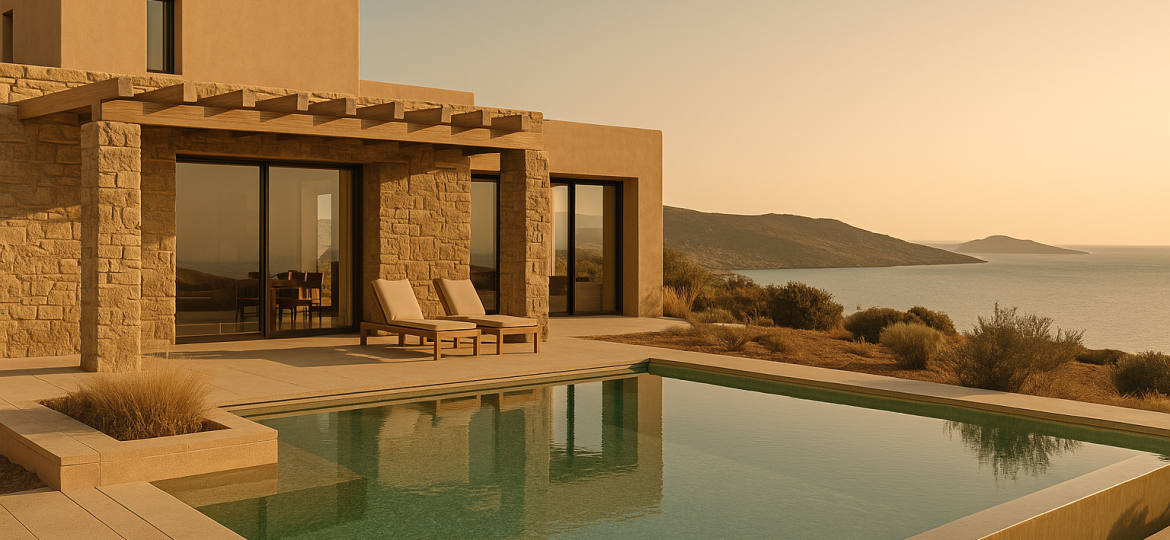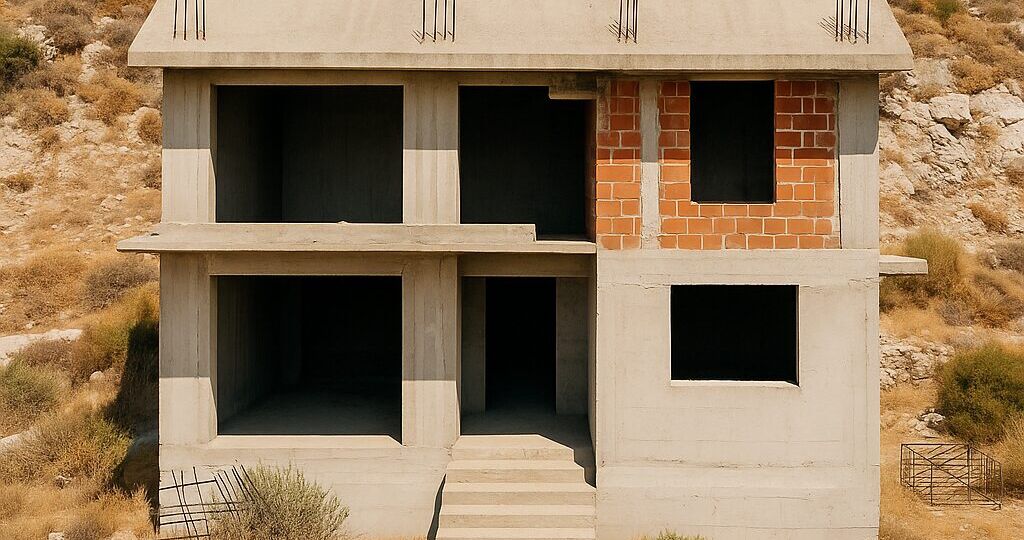A smart design approach that blends beauty, rental income, and long-term performance—without overspending.
Let me tell you about a project that proves you don’t need a Champagne budget to create a stunning, high-performing villa in Greece.
“Cindy” came to us with what you’d call a beer budget. Modest resources, but a very clear goal: a vacation home that would delight her family, attract high-end renters, and fit beautifully into its natural surroundings.
Now, a lot of people in that situation would just slap together a basic white box, throw in some IKEA furniture, and hope the sea view does the work. Not us.
Cindy did something most clients don’t: she let us lead. She trusted our process, our eye, and our understanding of what international guests truly value in a home. That trust made all the difference.
We started with the land—wild, raw, and full of character. The temptation would have been to tame it. Flatten, clear, domesticate. But we went the other way. We let the terrain guide the design. We nestled the villa into the slope, framing views rather than forcing them. We kept the natural flora intact. No artificial lawns, no palm trees that don’t belong—just the Greek landscape, honest and untamed.
Inside, we focused on moments.
Walk down the main stair and you’re greeted by a two-story glass window framing a massive rock formation that appears to rise out of the sea. We call it the “altar.” We didn’t place it there—nature did. We just made sure you saw it. Framed it. Celebrated it.
In the kitchen, we chose materials that feel expensive but wear well. High end taps. Deep, textural stone counters. Integrated appliances. It’s a place you want to cook, even if you don’t like cooking. The villa feels luxurious where it matters: where people gather, touch, and feel.
Lighting was another key element. We created warm, indirect lighting paths that soften the house at night. The wall outside the living room glows with hidden uplighting. The bathroom mirror is backlit like a five-star suite. The pool area shifts from crisp and clean during the day to seductive and cinematic at night.
But we didn’t waste money where it wouldn’t show.
Flooring? Affordable, minimalist but durable (not tiles, and certainly not generic budget tiles). Finishes in secondary areas? Functional. We strategically mixed materials so that the guest sees quality everywhere they interact, while keeping costs low in non-impact zones.
Cindy’s villa looks expensive. But it was smartly built.
We didn’t cheap out on systems either. We chose reliable, products and materials —because if you want a home to last the salty Mediterranean Sea breeze, the bones matter.
The garden? We left most of the wild landscape in place. No maintenance-heavy imported plants. The house feels like it grew there. And because of that, it costs less to run and feels more authentic.
Here’s what matters:
The villa rents higher per night than larger houses nearby
It was built for significantly less than most of those homes
It’s on track to pay itself off within 7 years, taxes included
Even during peak season, when Cindy and her family visit, the house’s clever layout means part of it can still be rented—because we designed it to split cleanly into two units without losing function or beauty.
And perhaps most important of all: it’s memorable.
People take photos here. They talk about it. They remember the light, the view, the textures. They book it again.
This is what great architecture does. It doesn’t just create shelter. It creates a story. An experience. A return on investment.
If you’re considering building in Greece, especially as a foreign buyer, don’t start with a price per square meter. Start with a question:
How do you want your guests to feel?
If you get the answer right, the bookings will follow.



1 Comments
Great article. I would like to learn more about Cindy’s project, ie, see pics of it, home size, budget.
Thank you.